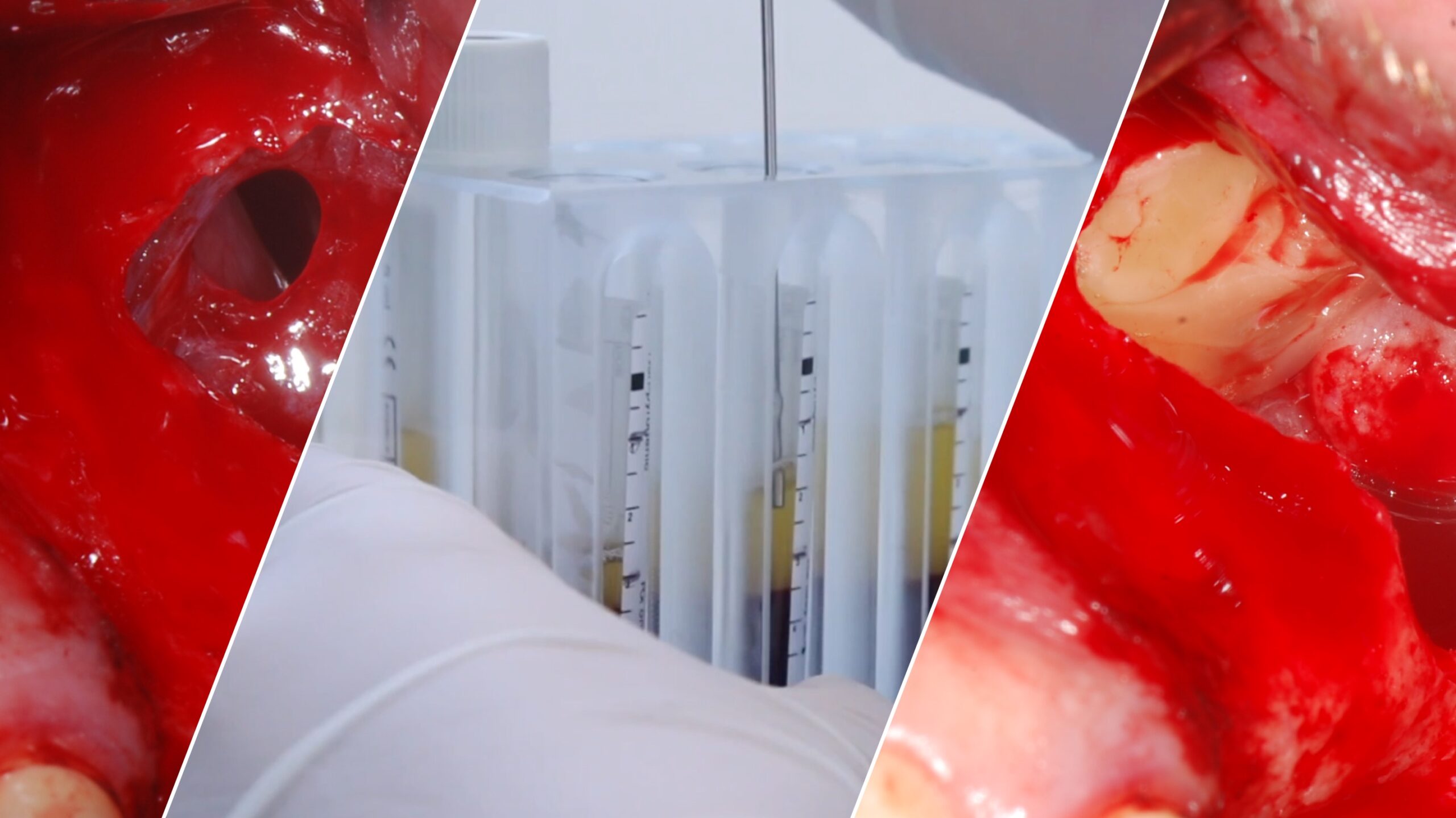Many beneficial effects have been reported in the Scientific Literature from the Growth Factor Therapy which points out the real biological effect in terms of proliferation and cellular differentiation.
Thus, many of these properties have been criticized by many experts even denying some of the reported benefits. This is why I would like to mention certain real aspects without the small letter about the curious proteins with a powerful effect.
Different versions in terms of Fractioning Protocol have been stablished, adding or discarding the leucocytes into the clot to be used addressed to cellular lysis, the time of GF release, the application and specific formula for the highest amount of GF achieved by changing speed, degrees of inclination at the time of centrifuge, etc… This is why I will speak about my experience with PRGF Endoret from BTI.
The Fractioning Protocol stablished by PRGF Endoret makes quite simple to divide and recruit the appropriate amount of clot depending on what am I going to make, either autogenous fibrin membranes or a heavy clot to contain my particulate bone graft.
At the most bio molecular level we can confirm that the GF released by platelets among others connect with the Tyrosine Kinase receptors at the extracellular part of the membrane to call for secondary messengers inside the cell which will have an intracellular signal effect over the nucleus to promote cell proliferation differentiation.
At the most clinical level this Bioactive modifier has been proven to be effective because:
1-. Increases the angiogenesis, the amount of blood vessels in charge of the nutrition of the new tissue to be formed from granulation tissue.
2-. The faster closer of the wound the more bacteriostatic effect since we block the passage of bacterias inside by speeding up the wound healing.
3-. Agglutinant Properties: The Adhesive Properties of the GF provides to the particulate bone integrity and stability at the recipient site.
4-. Autogenous Fibrin membranes allow me to increase the epithelial thickness under the flap especially the ones with tension (not recommended) and potential early opening by soft tissue dehiscence.
5-. GF Therapy has many applications besides oral surgery such as Dermatology to protect against accelerated aging by ultraviolet rays, traumatology, and dermal & epidermal ulcers for wound healings.
From the Oral Surgery Perspective some of the scenarios which I personally use the most this specific additional concept is:
1-. Sinus Lift: For the perforation management repair of the Shneiderian Membrane as well as to increase the thickness of the membrane while moving it and making the space to host the bone graft.
2-. Guided Bone Regeneration GBR: As agglutinant to give integrity of my graft and also to cover the overlying membranes.
3-. Socket Preservation in cases of Oro-Antral communication.
4-. Root Coverage, either at the recession area (never exposed) to create space and promote new tissue formation + new CTG growth and at the donor site to fasten up healing.
5-. Vestibuloplasty to increase the keratinized gingiva at the receptor site.
We are living the new era of GF therapy. This is the moment to learn the real effect, create a new protocol and include this amazing therapy to your surgeries to become more predictable and avoid complications.
GF Therapy does not only provide a good soft tissue healing, it shows a collateral beneficial effect and many advantages over not using it.


Great explanation, one think I would like to add reduce symptoms of pain in the surgeries.